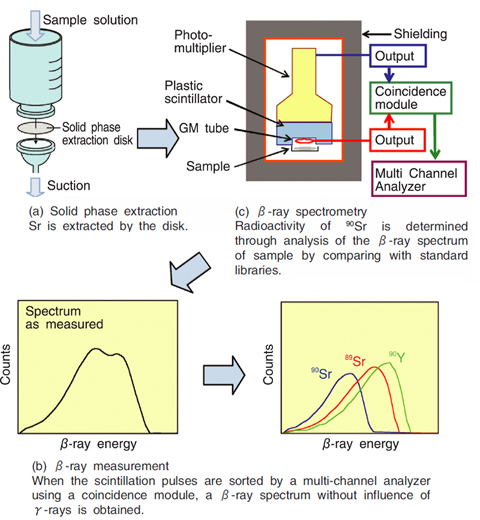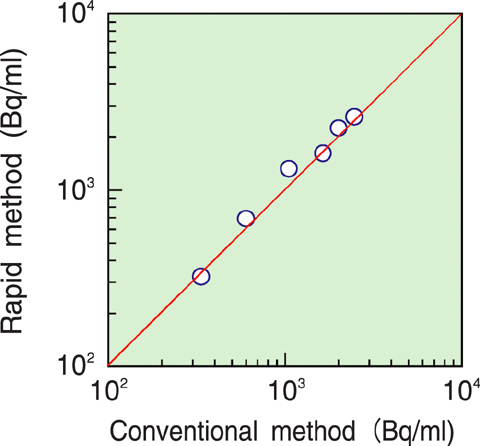
Fig.9-2 Rapid and simple 90Sr determination method

Fig.9-3 Comparison between 90Sr values found by conventional and rapid methods
For proper disposal of radioactive waste packages generated from various research facilities, an evaluation of radioactivity inventories in the waste packages is indispensable. In order to establish a practical and reliable verification method, we are currently collecting data concerning radioactivity concentrations in radioactive wastes before processing.
90Sr is one of the most important nuclides from the viewpoint of safety assessment of the radioactive waste disposal process. Since 90Sr emits only β-rays when it decays, nondestructive measurement cannot be done. In a conventional method, Sr is separated by ion-exchange chromatography or a precipitation method. After the Sr fraction reaches radioactive equilibrium with 90Y, the daughter nuclide of 90Sr, the 90Sr is separated and quantified. The tedious and time-consuming chemical separation in this method is a major problem.
Therefore, we developed a new rapid and simple determination method for 90Sr in radioactive wastes. In this method, 90Sr in the waste sample solution is quickly separated by a solid phase extraction disk (Fig.9-2(a)). After the extraction, radioactivity of 90Sr is also quickly determined through analysis of the β-ray spectrum of the sample by comparing with predetermined standard libraries (Fig.9-2(b),(c)). This method was successfully applied to the determination of 90Sr in liquid waste from nuclear research facilities.
The values of 90Sr determined by the rapid method were compared with the results of the conventional method, and they were in agreement with each other (Fig.9-3). As a result of our development work, separation of 90Y after reaching radioactive equilibrium was no longer needed. The time for the 90Sr determination was shortened to be less than one-third to one-fifth of the conventional method.
<Previous: 9 Development of Decommissioning and Radwaste Treatment Technology | Next: 10 Collaboration on Basic Nuclear Engineering >